01 Jul Grades of Matcha: From Everyday Delight to Ceremonial Elegance
In the realm of tea, few varieties can evoke as much intrigue and curiosity as matcha. From ceremonial grades prized for their delicate flavors to culinary grades ideal for versatile use in recipes, the range of matcha grades offers a captivating journey. Its vibrant green hue and distinct flavour profile have captivated tea enthusiasts for centuries. Yet, we understand that navigating the world of matcha can sometimes be overwhelming, with its different grades, preparation methods, and health benefits.
How is matcha made?
Ceremonial matcha and culinary matcha undergo slightly different production processes, resulting in distinct qualities and flavours.
Ceremonial Matcha production process
Ceremonial matcha, known for its superior quality, begins with the careful cultivation of tea plants under shade coverings for 10-20 days before harvest.
This shading process stimulates the production of chlorophyll and amino acids, enhancing the tea leaves’ vibrant green colour and umami flavour. The shade-grown leaves are then hand-picked, steamed, dried, and meticulously stone-ground into a fine powder, preserving the tea’s delicate aroma and smooth texture.
Culinary Matcha production process
On the other hand, culinary matcha is often made from tea leaves that receive less shading, resulting in a slightly different taste and colour. The leaves are typically machine-harvested and undergo a more robust processing method, including steaming, drying, and grinding. This culinary-grade matcha offers a more robust flavour profile, making it ideal for cooking and blending into various recipes.
New to matcha? Try our matcha tea and discover our premium matcha boxes – equipped with all the necessary tools that you will need.
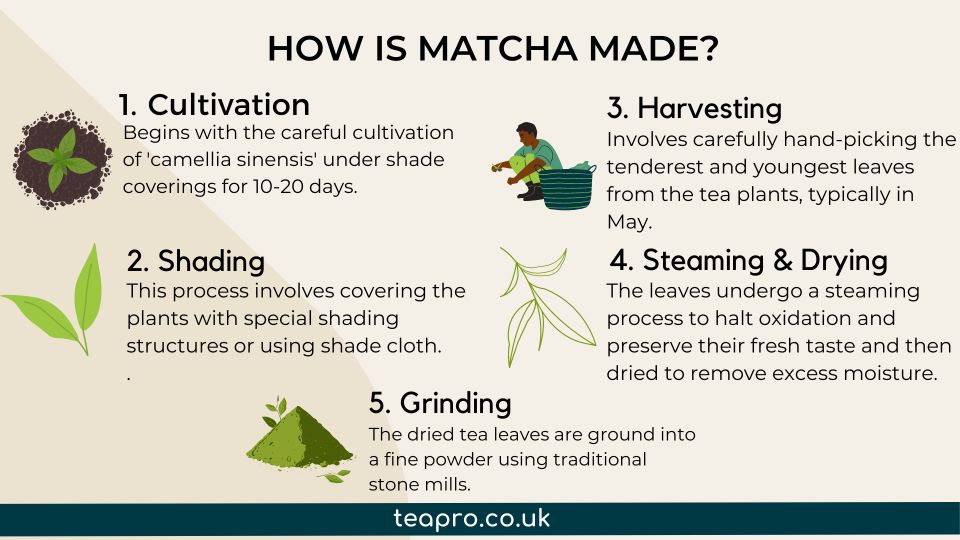
What are the Health Benefits of Matcha?
Matcha, the powdered green tea, offers a plethora of health benefits that surpass those of regular green tea.
EGCG content
With its concentrated form, matcha contains significantly higher levels of antioxidants, such as catechins, than steeped green tea. According to studies, matcha has been found to have 137 times more epigallocatechin gallate (EGCG) antioxidants compared to regular green tea. These powerful antioxidants help combat oxidative stress and protect against cellular damage caused by free radicals.
L-theanine content
Moreover, matcha’s unique combination of L-theanine and caffeine provides a calm yet alert mental state, enhancing focus and concentration. Matcha’s L-theanine content also helps mitigate the side effects of caffeine, providing a sustained energy boost without the jitters or crashes commonly associated with other caffeinated beverages.
Chlorophyll content
Furthermore, matcha is known for its high chlorophyll content, which gives it its vibrant green color. Chlorophyll is believed to have detoxifying properties and can help eliminate harmful toxins from the body. Matcha is also rich in vitamins, minerals, and fiber, providing an added nutritional boost to your diet.
Vitamins, Fibres, and Minerals
Moreover, ceremonial matcha supports a healthy metabolism, aiding in weight management and promoting a sense of vitality.
While both matcha and regular green tea offer health benefits, matcha’s unique production process and concentrated form make it a more potent source of antioxidants and nutrients. By incorporating matcha into your daily routine, you can enjoy its remarkable health benefits and indulge in its delicious flavour and vibrant green hue.
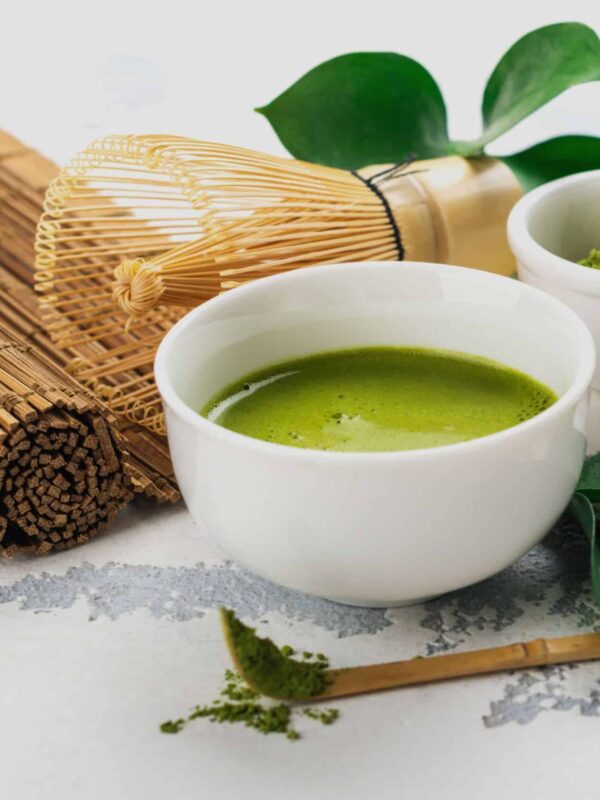
Grades of Matcha: Understanding the Varied Types of Quality Available
When it comes to matcha, there are two primary types of grades that determine the quality and characteristics of powdered tea: ceremonial grade and culinary grade. Each grade offers a unique experience and is suited for different purposes.
Ceremonial Grade
Ceremonial grade matcha is the highest quality, made from the youngest tea leaves that are carefully shade-grown, hand-picked, and stone-ground to create a vibrant green powder. It boasts a smooth flavour, rich umami notes, and a vibrant green colour.
Culinary grade
Culinary-grade matcha, on the other hand, is more versatile and affordable. It is often used in cooking, baking, and blended beverages, offering a slightly more robust flavour and a slightly less vibrant colour. While both grades have their merits, the choice ultimately depends on personal preference and specific usage
Try our ceremonial grade matcha – grown in the region known as “Land of Fire” it is of the highest quality of matcha grades and offers a delicate and sweet flavour.
Ceremonial Grade Matcha: The Epitome of Elegance and Tradition
Ceremonial grade matcha is the crème de la crème of matcha, made from the finest first-harvest leaves. With its smoother flavor, vibrant green color, and traditional preparation, it is the epitome of matcha perfection. This grade is traditionally enjoyed in tea ceremonies, embodying elegance and tradition. While it tends to be more expensive, indulging in ceremonial grade matcha is not just a treat for the taste buds, but also a cultural experience that connects you to centuries of tradition and craftsmanship.
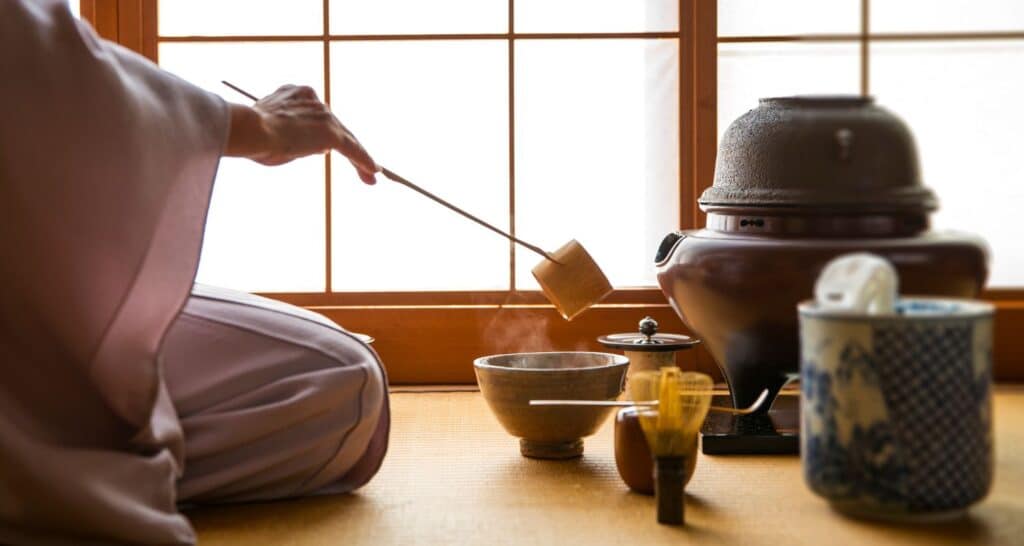
Evaluating the Quality of Ceremonial Matcha
When testing the quality of matcha, several key factors come into play.
Firstly, observe the colour of the matcha powder, aiming for a vibrant green hue indicative of young, shade-grown leaves.
Next, assess the aroma, with high-quality matcha emitting a fresh and grassy fragrance. Moving on to taste, premium matcha should possess a delicate yet rich flavour, balanced sweetness, and a smooth texture.
Consider the origin and grade of the matcha, opting for reputable sources and understanding that the ceremonial grade represents the highest quality.
Lastly, while price can provide a general indication, it’s important to balance quality and fair pricing. By considering these elements, you can confidently evaluate the quality of your matcha and ensure an exceptional tea experience.
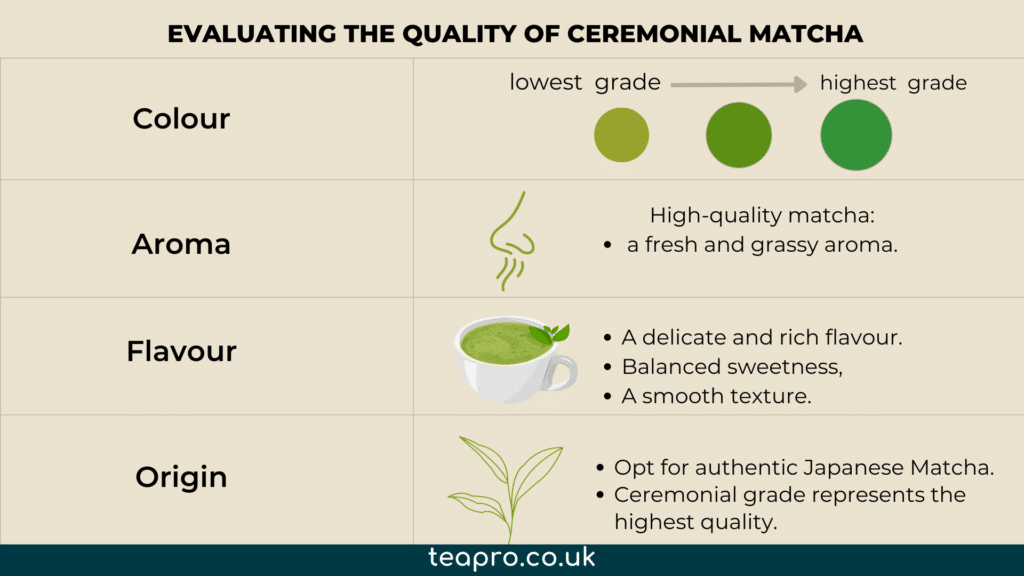
Exploring the Two Types of Ceremonial Matcha
Premium ceremonial
Known for its exceptional quality, it is used primarily for traditional tea ceremonies. It undergoes a meticulous process, starting with shade-grown tea plants and hand-picked young leaves. It is reserved for special occasions, tea ceremonies, and moments of mindfulness. It is highly esteemed in Japanese tea culture, symbolizing reverence and appreciation.
Ceremonial
While still of high quality, it may vary slightly in flavour, colour, and texture compared to the premium grade. It is suitable for both formal ceremonies and everyday consumption, offering a delightful matcha experience without the heightened exclusivity of premium ceremonial matcha.
Koicha vs Usucha
One of the remarkable aspects of ceremonial matcha is its versatility in preparation. While it is commonly whisked into a frothy, light-bodied tea known as usucha, ceremonial matcha can also be used to create koicha, a thick and concentrated form of matcha. Koicha is an experience reserved for special occasions and tea ceremonies, where the tea is prepared with a higher ratio of matcha powder to water, yielding a luscious, velvety texture and an intensified flavour profile.
The preparation of koicha requires precise hand movements and a unique whisking technique to achieve the desired consistency. Sipping on a bowl of koicha allows one to savour the full-bodied richness, distinct umami flavour, and lingering sweetness of ceremonial matcha.
Whether you choose to prepare a bowl of frothy usucha or delve into the luxurious realm of koicha, ceremonial grade matcha offers a sensory journey that awakens the senses and nourishes the soul. Its unparalleled quality and inherent beauty make it a treasured companion for those seeking a truly authentic and transcendent matcha experience.
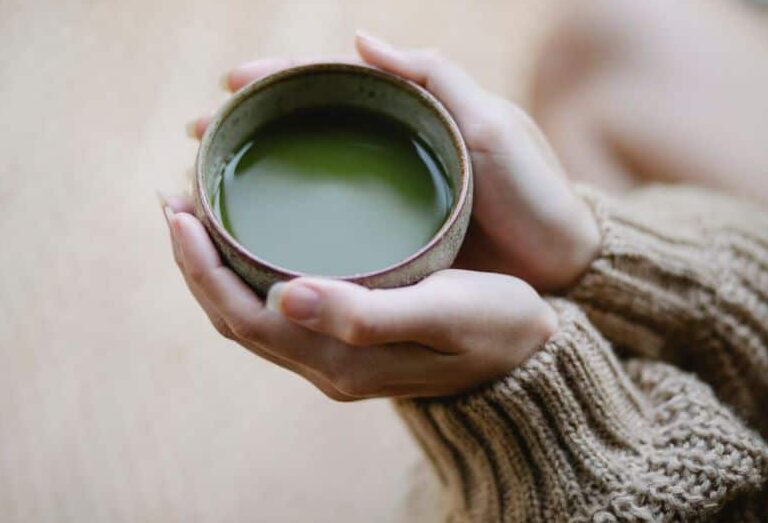

Premium Ceremonial Matcha Set – Blue Matcha Gift Set

What Are Some Delicious Food Pairings with Ceremonial Grade Matcha?
The smooth and refined taste of ceremonial matcha lends itself beautifully to a variety of culinary delights. For a delightful morning treat, pair your matcha with a flaky, buttery croissant or a delicate slice of matcha-infused pound cake.
When it comes to savoury options, consider serving ceremonial matcha alongside sushi, where its vibrant taste cuts through the richness of the fish, or using it as a seasoning for roasted vegetables to add a unique depth of flavour.
For those with a sweet tooth, matcha pairs wonderfully with white chocolate, creating a harmonious blend of creaminess and herbal notes. And don’t forget to experiment with matcha in homemade ice creams, smoothies, or even matcha-infused cocktails for a refreshing twist.
Additionally, pairing wagashi sweets with matcha is a delightful tradition in Japanese culture, as the subtle sweetness and delicate flavours of wagashi beautifully complement the vibrant and earthy notes of matcha, creating a harmonious and balanced tasting experience.
Discover more unique matcha dessert recipes and level up your matcha game. Each recipe is vibrant and and fun.
Make sure to use our selection of matcha tools to make your dessert making experience even better!
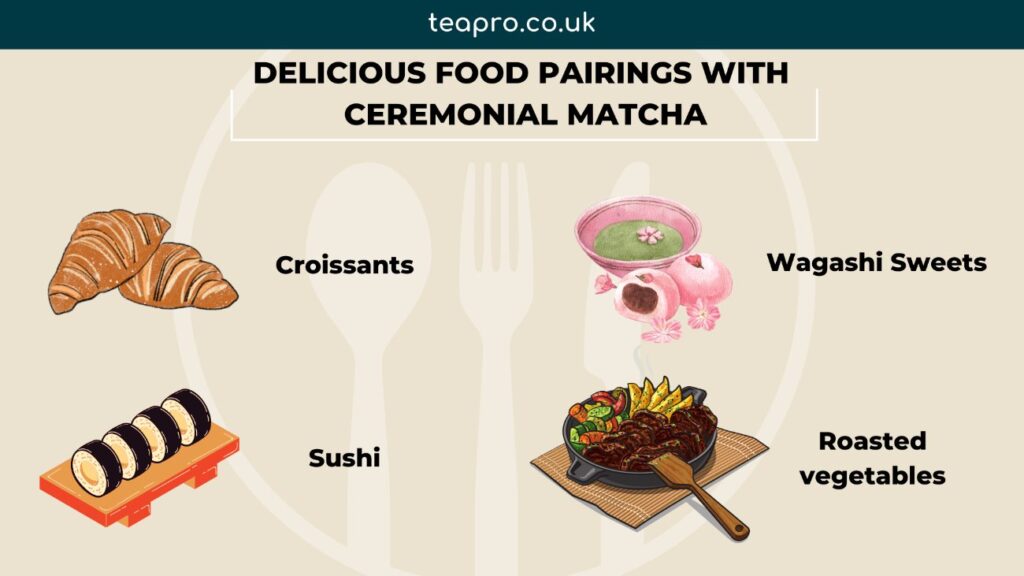
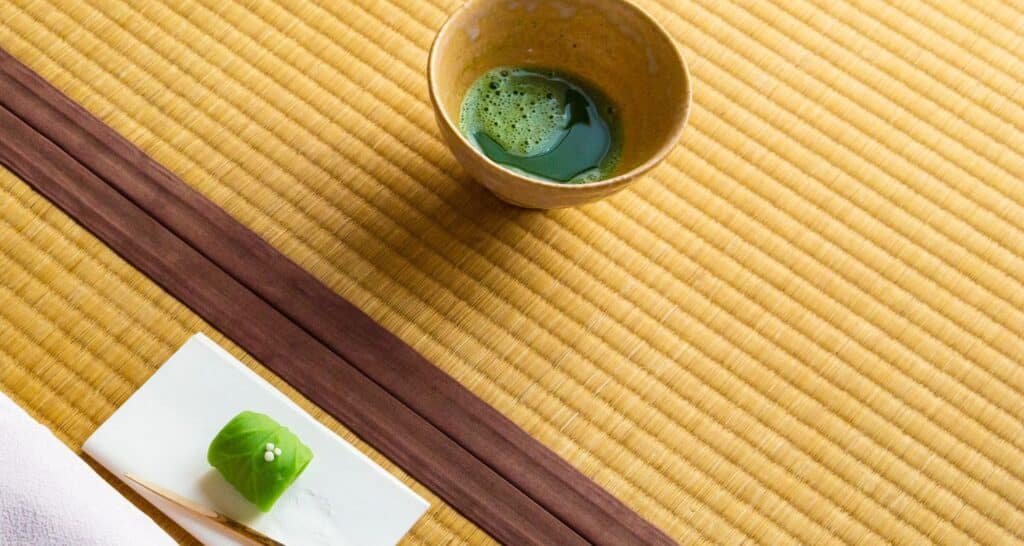
Culinary Matcha Grades: Premium, Café, Ingredient, Kitchen, & Classic
For those who love cooking, culinary matcha is the flavorful secret ingredient that adds a vibrant twist to your culinary creations. With its vibrant green color and versatile flavor profile, culinary matcha is the secret ingredient that takes your recipes from ordinary to extraordinary. Whether you’re blending it into smoothies, infusing it into baked goods, or whisking it into a frothy latte, culinary matcha brings a delightful twist to your culinary creations. With a range of grades to choose from – premium, café, ingredient, kitchen, and classic – you have the freedom to experiment and find the perfect matcha for your taste buds.
However, when it comes to matcha, there is a distinct contrast between the culinary grade and the superior ceremonial grade. While both grades have their merits, ceremonial matcha reigns supreme in terms of quality and experience. Ceremonial matcha is meticulously crafted from the finest, shade-grown leaves, hand-picked at their peak. Its vibrant green colour, delicate flavour, and velvety texture elevate it to a class of its own.
1. Premium Culinary Matcha: The MVP of Your Kitchen Game
Made from hand-picked, shade-grown tea leaves, this vibrant green powder enhances both sweet and savoury dishes. Use it to create matcha-infused desserts like cakes and ice creams, or enjoy matcha-flavoured beverages such as lattes and smoothies. It is suitable for more refined culinary creations, such as high-end desserts and beverages.
Want that café-style froth in your iced matcha latte? Make it with our Matcha Whisk Set for the smoothest blend.
2. Café Culinary Matcha: Fuel Your Matcha Mania
Cafe Culinary matcha, while still of good quality, may have a slightly less intense flavour and a more subdued colour. It is commonly used in cafes and coffee shops for matcha-based drinks and simpler recipes. Incorporate it into smoothies, baked goods, matcha lattes, or desserts like ice cream and cakes to unleash its vibrant and unique taste.
3. Ingredient Culinary Matcha: The Flavor Enhancer Extraordinaire
This type of matcha is known for its vibrant green colour, earthy flavour, and ability to harmonize with dairy-based ingredients. It blends effortlessly with milk or cream, making it an excellent choice for lattes, smoothies, and desserts. From matcha-infused ice creams and cheesecakes to matcha pancakes and green tea cookies, the possibilities are endless.
4. Kitchen Culinary Matcha: Your Everyday Kitchen Hero
Also known as cooking-grade matcha, is created using the least delicate leaves from the harvest, making it more robust in flavour and colour. While it may not possess the same delicate nuances as ceremonial matcha, kitchen culinary matcha offers a versatile and flavorful ingredient for various culinary creations. Kitchen culinary matcha is a fantastic choice for those looking to experiment with matcha in large-scale brewing or explore new recipes. Its versatility shines when used in various culinary creations, such as, muffins, or savoury dishes like matcha-spiced rice or matcha-marinated tofu.
5. Classic Culinary Matcha: Your Matcha Introduction
If you’re new to the matcha world or prefer a milder matcha flavour, let us introduce you to classic culinary matcha. Classic culinary matcha is made from the least amount of delicate tea leaves, ensuring a balance of flavour and affordability. With its versatile nature, culinary matcha can be used in a variety of recipes.
Deciphering the Grades of Matcha for Informed Selection
Choosing between culinary and ceremonial matcha depends on your intended use and flavour preferences.
Culinary matcha is best suited for recipes where matcha serves as an ingredient, such as smoothies, baked goods, and savoury dishes. It provides a subtle matcha flavour without overpowering the other ingredients.
On the other hand, ceremonial matcha is reserved for special moments and when you want to savour the full essence of matcha. It is traditionally used in tea ceremonies or enjoyed as a standalone beverage. Its vibrant colour, smooth texture, and delicate taste make it perfect for moments of tranquillity and appreciation.
Whether you’re looking to incorporate matcha subtly into your culinary creations or indulge in the pure essence of matcha, both culinary and ceremonial matcha offer unique and delightful experiences.
Ultimately, the decision between culinary and ceremonial matcha depends on your personal preference and the desired intensity of matcha flavour in your dish or beverage. Experiment with both grades to find the perfect balance that suits your taste and culinary aspirations.
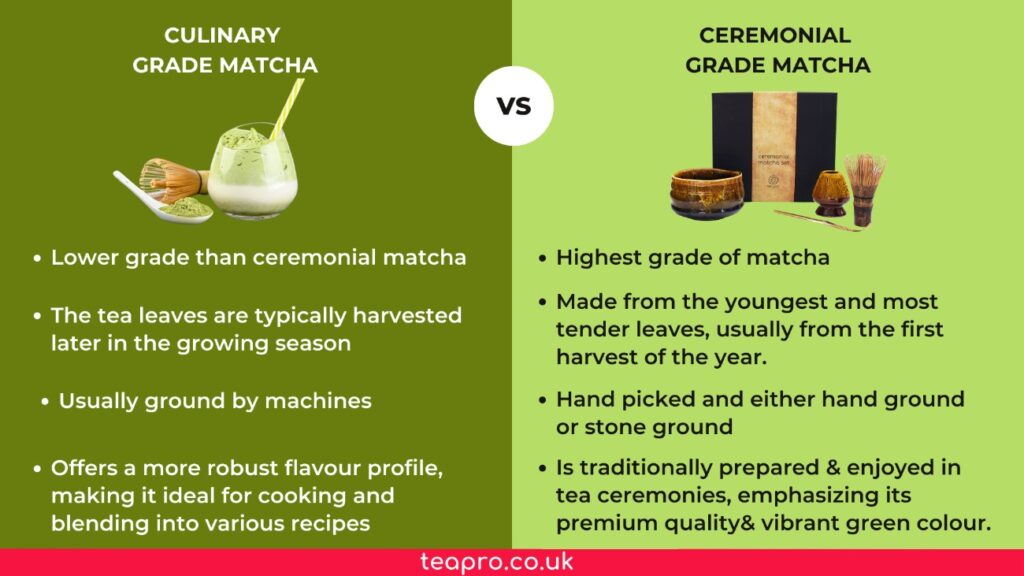
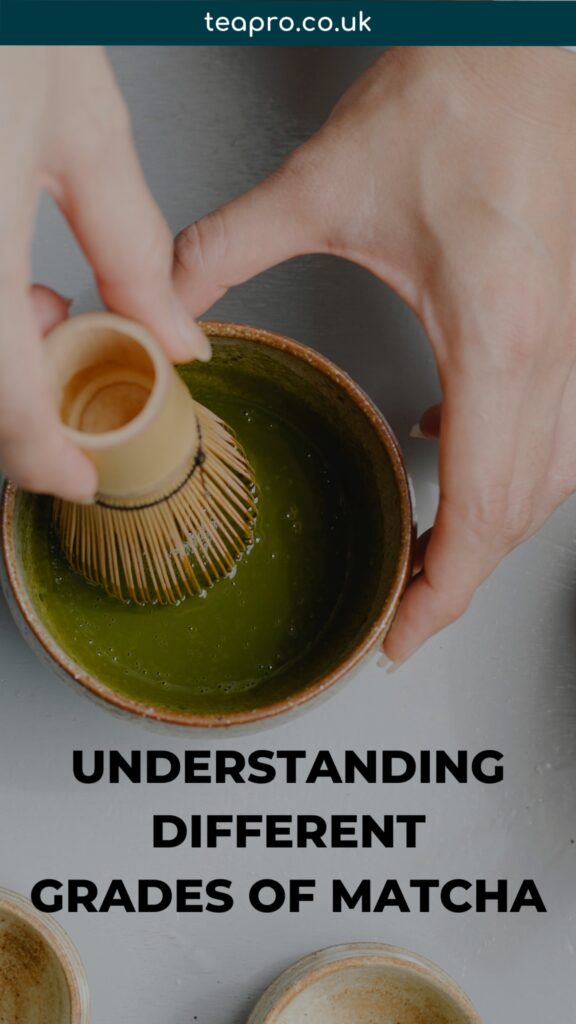

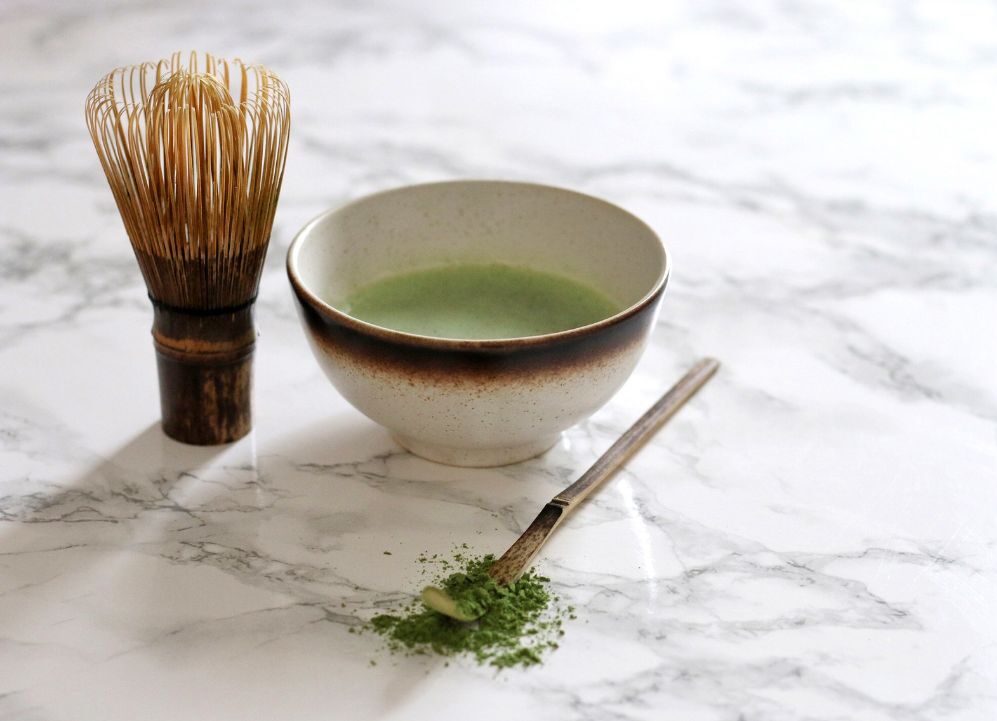
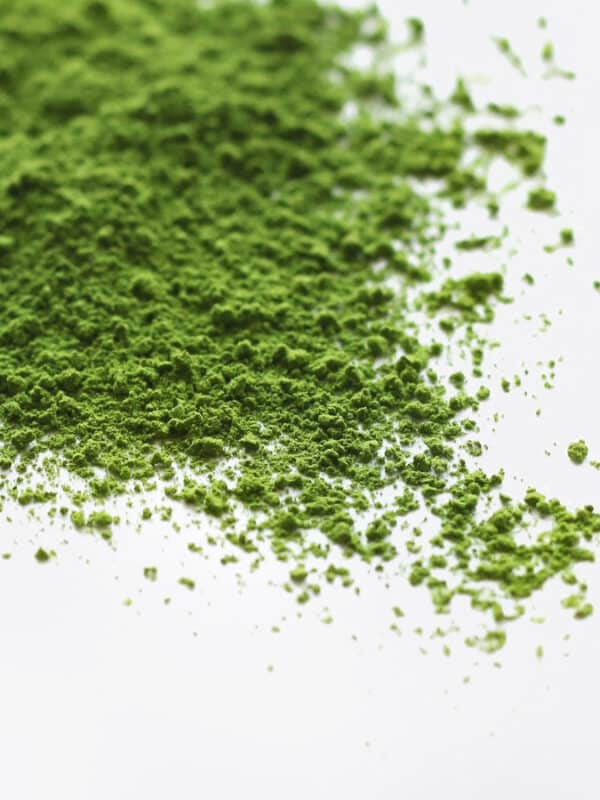
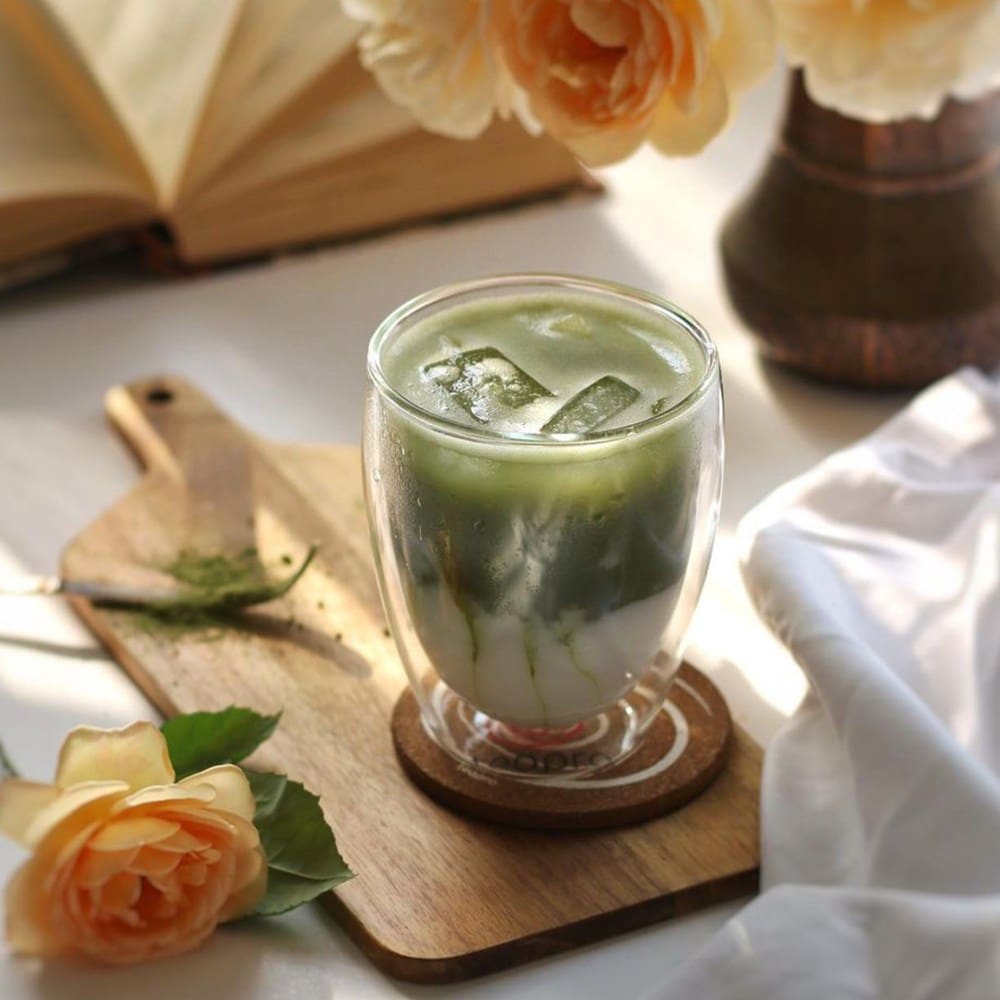
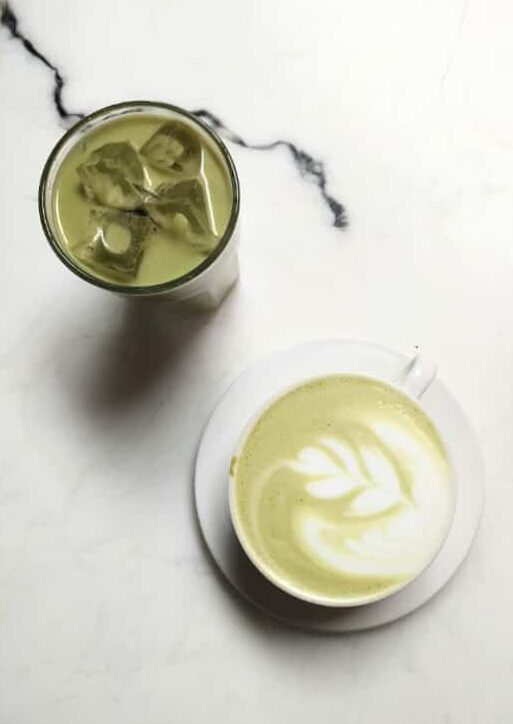
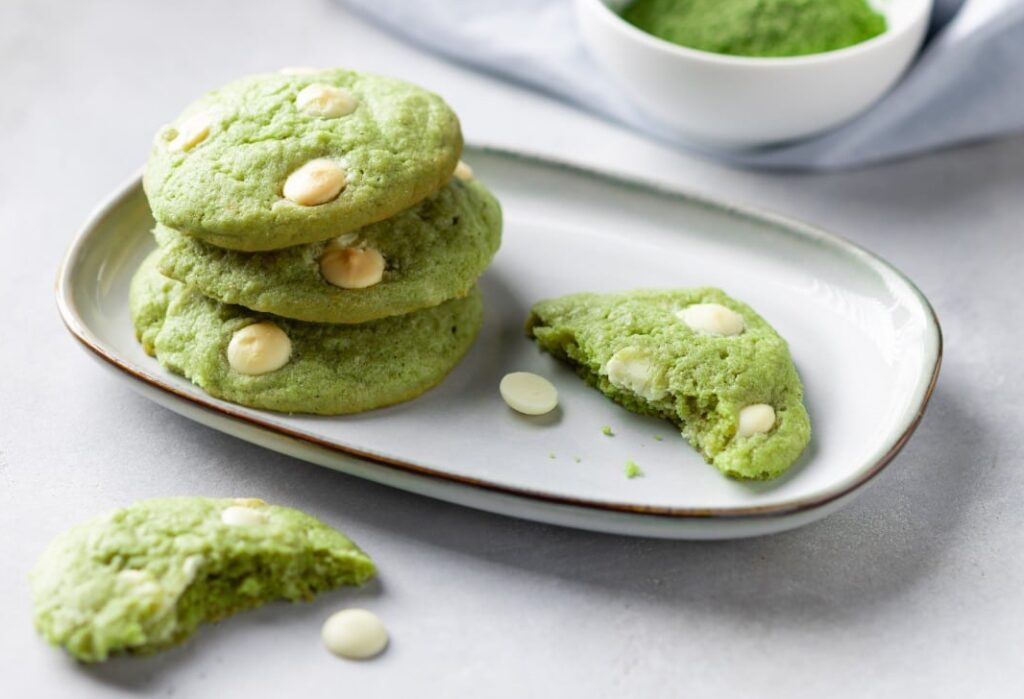
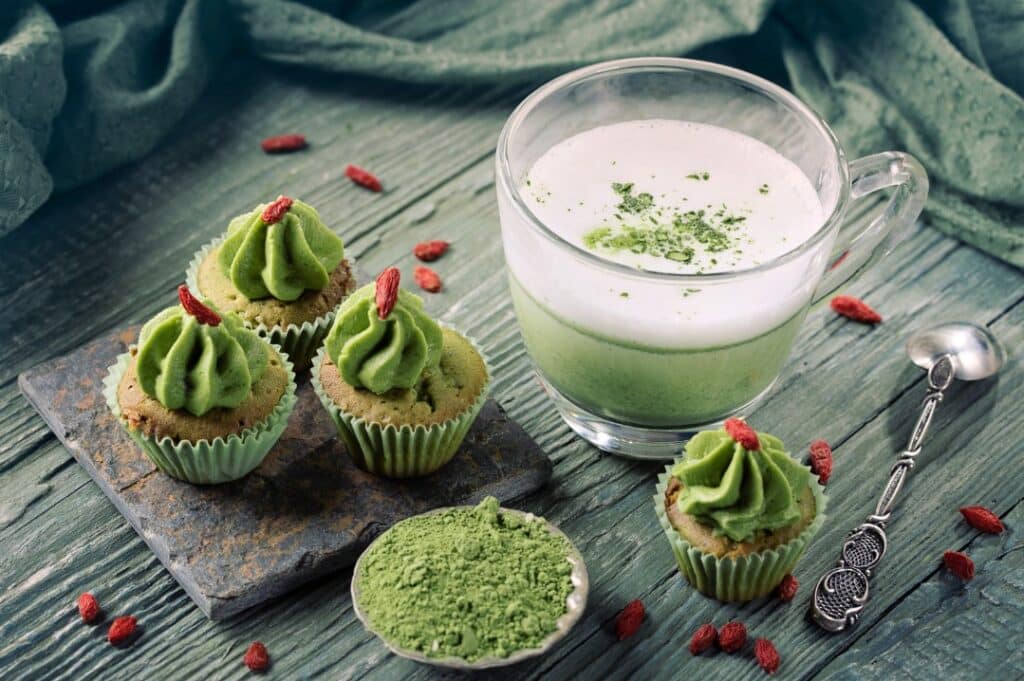
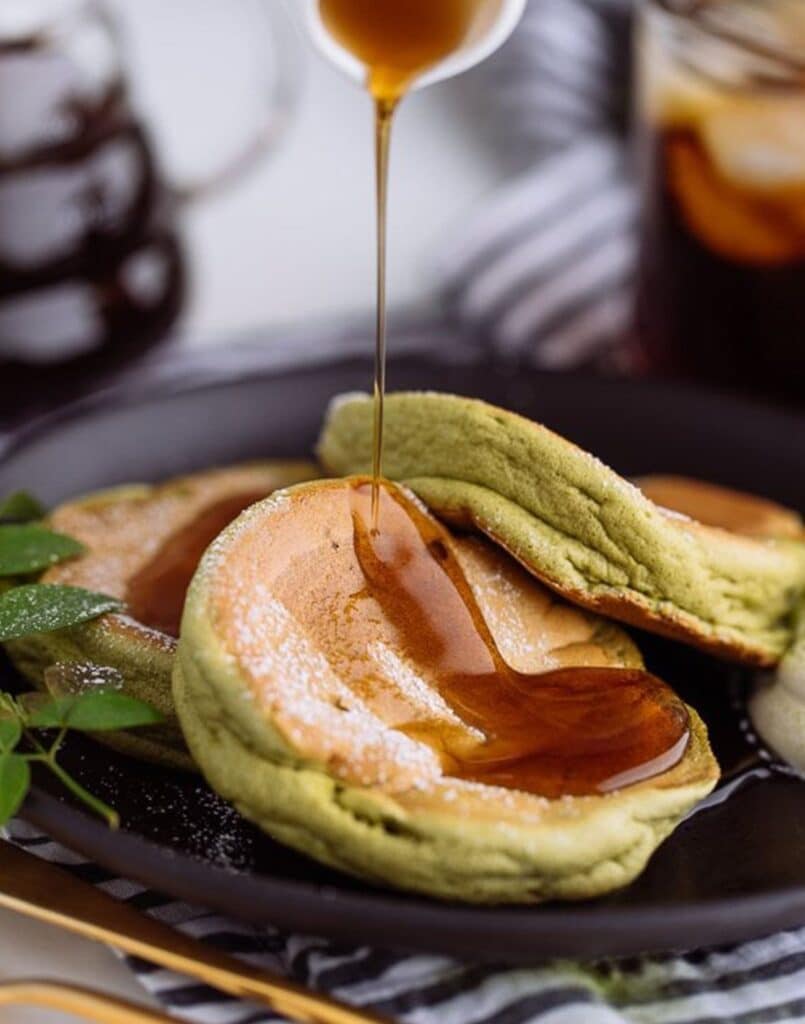
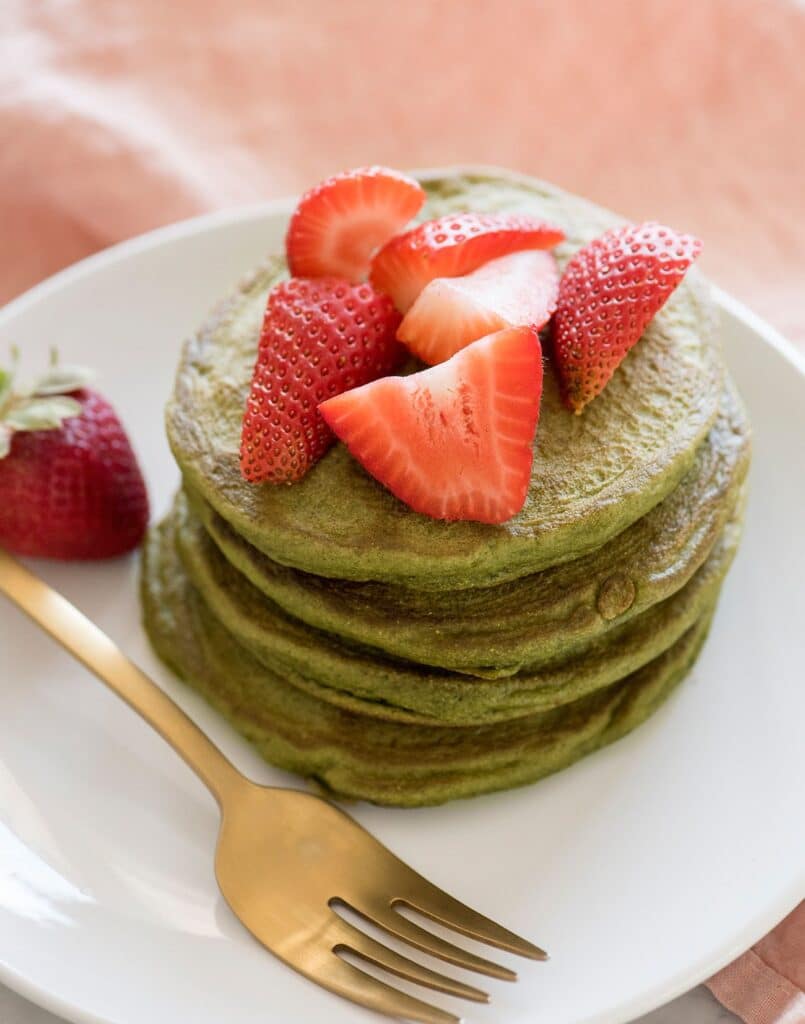
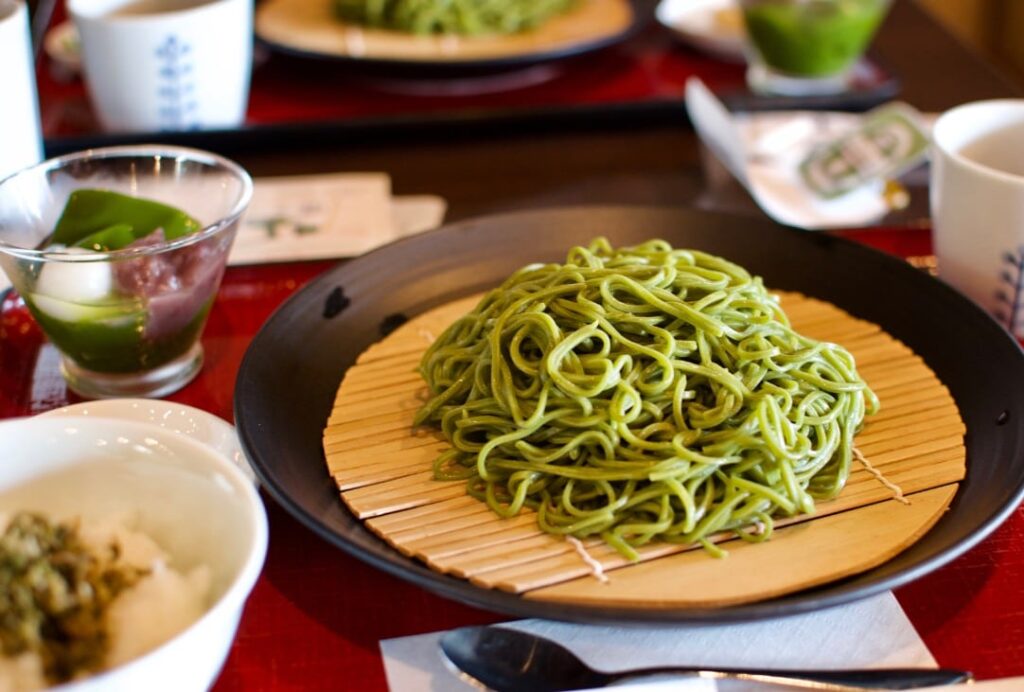
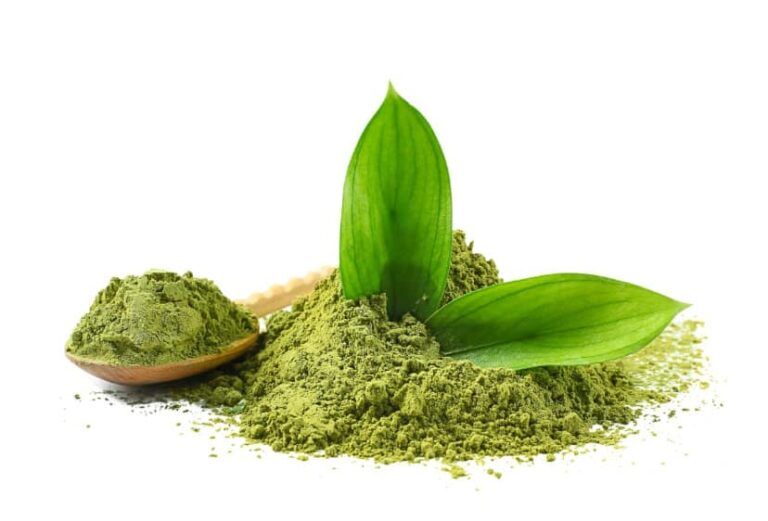


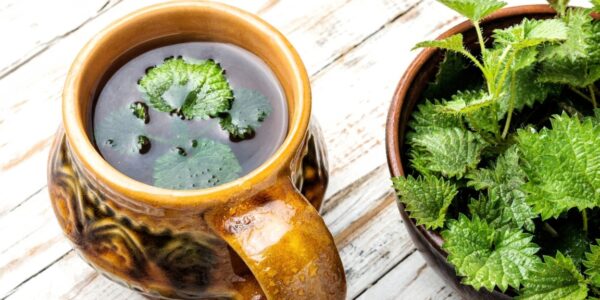


No Comments